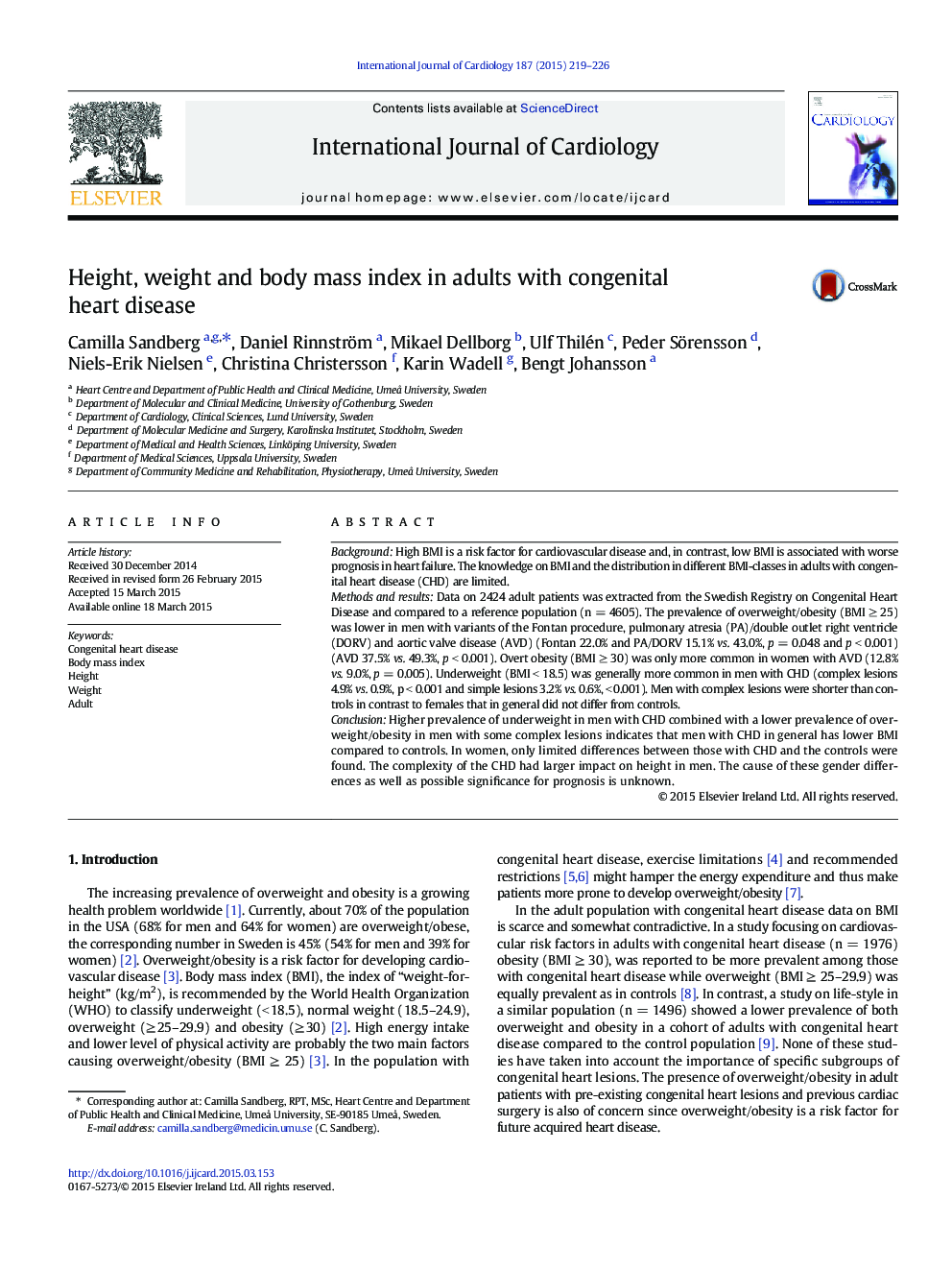| Article ID | Journal | Published Year | Pages | File Type |
|---|---|---|---|---|
| 5967902 | International Journal of Cardiology | 2015 | 8 Pages |
BackgroundHigh BMI is a risk factor for cardiovascular disease and, in contrast, low BMI is associated with worse prognosis in heart failure. The knowledge on BMI and the distribution in different BMI-classes in adults with congenital heart disease (CHD) are limited.Methods and resultsData on 2424 adult patients was extracted from the Swedish Registry on Congenital Heart Disease and compared to a reference population (n = 4605). The prevalence of overweight/obesity (BMI â¥Â 25) was lower in men with variants of the Fontan procedure, pulmonary atresia (PA)/double outlet right ventricle (DORV) and aortic valve disease (AVD) (Fontan 22.0% and PA/DORV 15.1% vs. 43.0%, p = 0.048 and p < 0.001) (AVD 37.5% vs. 49.3%, p < 0.001). Overt obesity (BMI â¥Â 30) was only more common in women with AVD (12.8% vs. 9.0%, p = 0.005). Underweight (BMI < 18.5) was generally more common in men with CHD (complex lesions 4.9% vs. 0.9%, p < 0.001 and simple lesions 3.2% vs. 0.6%, < 0.001). Men with complex lesions were shorter than controls in contrast to females that in general did not differ from controls.ConclusionHigher prevalence of underweight in men with CHD combined with a lower prevalence of overweight/obesity in men with some complex lesions indicates that men with CHD in general has lower BMI compared to controls. In women, only limited differences between those with CHD and the controls were found. The complexity of the CHD had larger impact on height in men. The cause of these gender differences as well as possible significance for prognosis is unknown.
